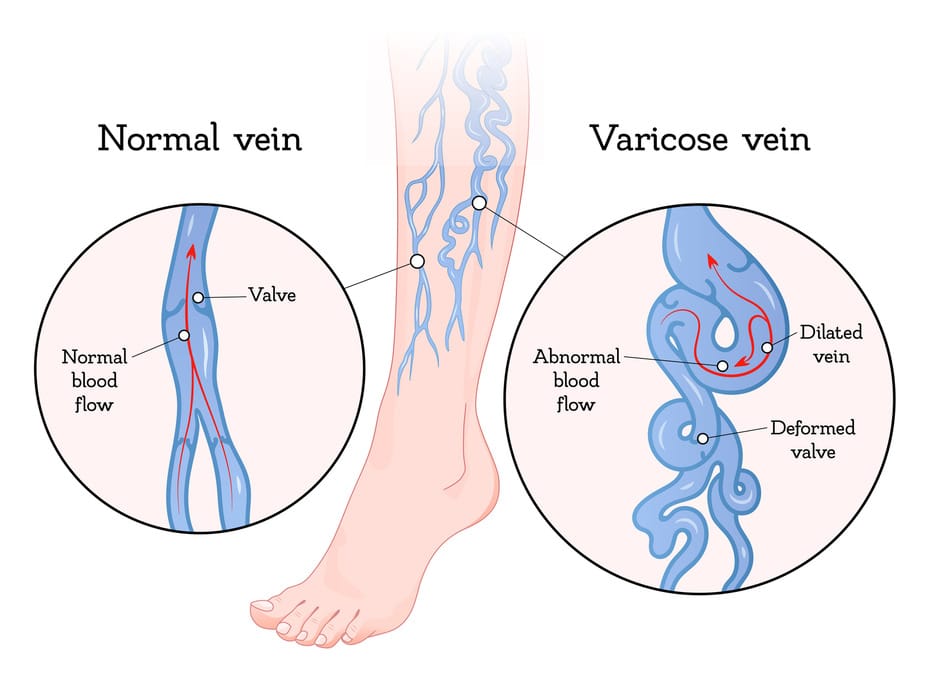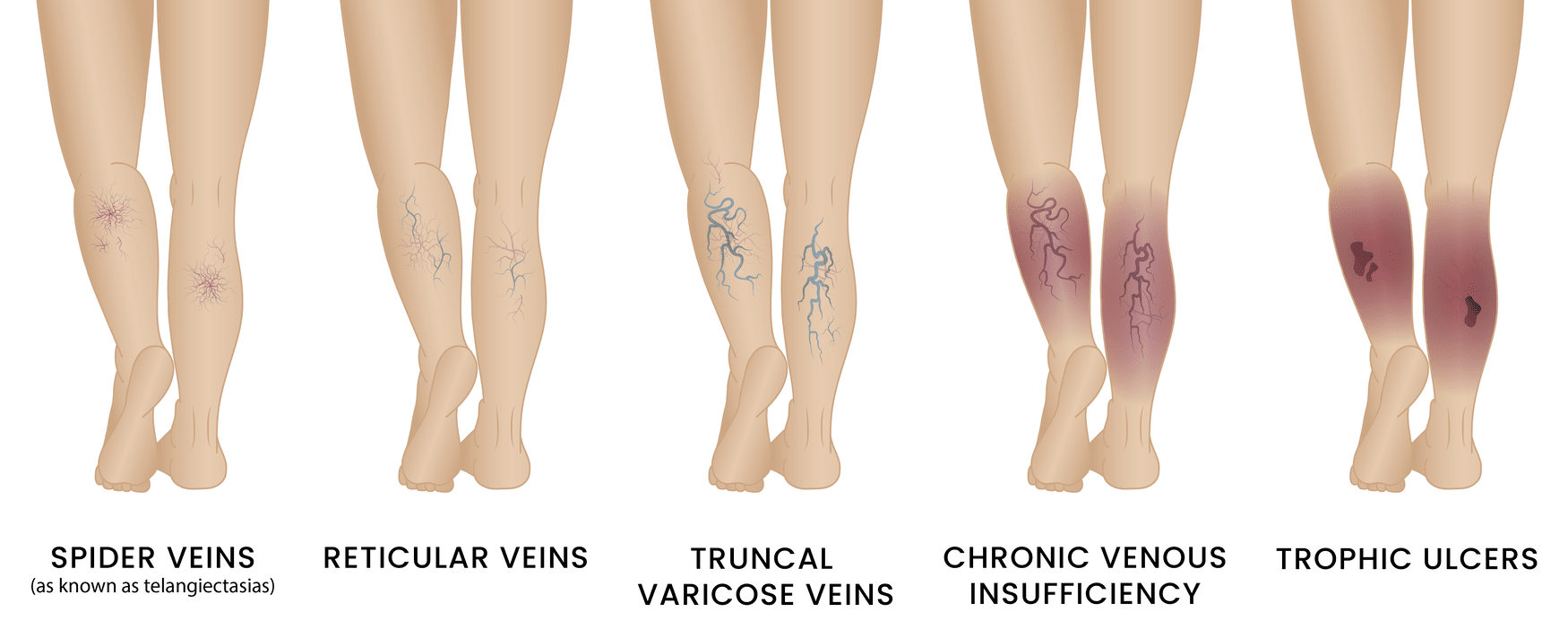Varicose Veins
What Are Varicose Veins?
Varicose veins commonly develop in our legs. They are often twisted, enlarged, and bulging veins that are blue or purple in color. They are caused by a type of venous disorder where the one-way valves in the veins become weak or damaged and results in pooling of blood because of the inability to pump blood out of the leg and back to the heart.
Varicose Veins develop because of several factors:
1. Genetics: A family history of varicose veins increases the rate of developing them.
2. Age: The risk of getting varicose veins increases with age, as our veins lose elasticity over time.
3. Gender: Women are more likely than men to develop varicose veins, possibly due to hormonal changes during pregnancy and menopause.
4. Pregnancy: Increased pressure on the veins in the pelvic and leg area during pregnancy can lead to varicose veins.
5. Obesity: Excess body weight can add pressure on the veins in the legs.
6. Prolonged standing or sitting: Jobs or activities that require longer periods of standing or sitting can increase the risk of varicose veins.

Common Symptoms of Varicose Veins:
Varicose veins can cause numerous symptoms, and the severity of symptoms varies across individuals including:
Visible, Enlarged Veins:
Aching or Pain:
Heaviness and Discomfort:
Swelling:
Itching and Burning:
Cramps:
Restlessness:
Skin Changes:
Ulcers:
Schedule a consultation with our team of experts!
Types of Varicose Veins:
Varicose veins can be categorized into different types based on their location and characteristics. The most common types of varicose veins include:
1. Spider Veins: (also known as telangiectasias veins) These are the most common type of varicose veins and typically occur near the surface of the skin in the legs. They appear as enlarged, twisted, and often bulging veins, and they can be seen just beneath the skin’s surface. Spider veins are often the ones associated with cosmetic concerns and mild discomfort.
2. Reticular Veins: Reticular veins are smaller than spider veins but can also appear near the surface of the skin. They are usually blue or green in color and are often interconnected with other veins. While not as large as varicose veins, they can still contribute to cosmetic concerns.
3. Truncal Varicose Veins: These are larger veins that may be deeper within the leg. They often serve as feeder veins, supplying blood to smaller varicose veins or reticular veins. Trunk varicose veins can be a source of significant discomfort and may require treatment.
4. Perforator Varicose Veins: Perforator veins connect the superficial veins to the deep veins in the leg. When these veins become damaged or dysfunctional, they can lead to increased pressure in the superficial veins, contributing to the development of varicose veins.
5. Pelvic Varicose Veins: While varicose veins most commonly occur in the legs, they can also develop in the pelvic area. Pelvic varicose veins can be associated with pelvic pain, discomfort, and other gynecological symptoms.
Stages and Development of Varicose Veins:


Visit New England Vein Center
Our providers are nationally recognized experts in minimally-invasive therapies for treating Varicose Veins. We provide treatment for patients with Varicose Veins throughout Western MA and Northern CT. To learn more about treatments available call (413) 435-4161 to make an appointment.
